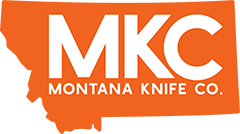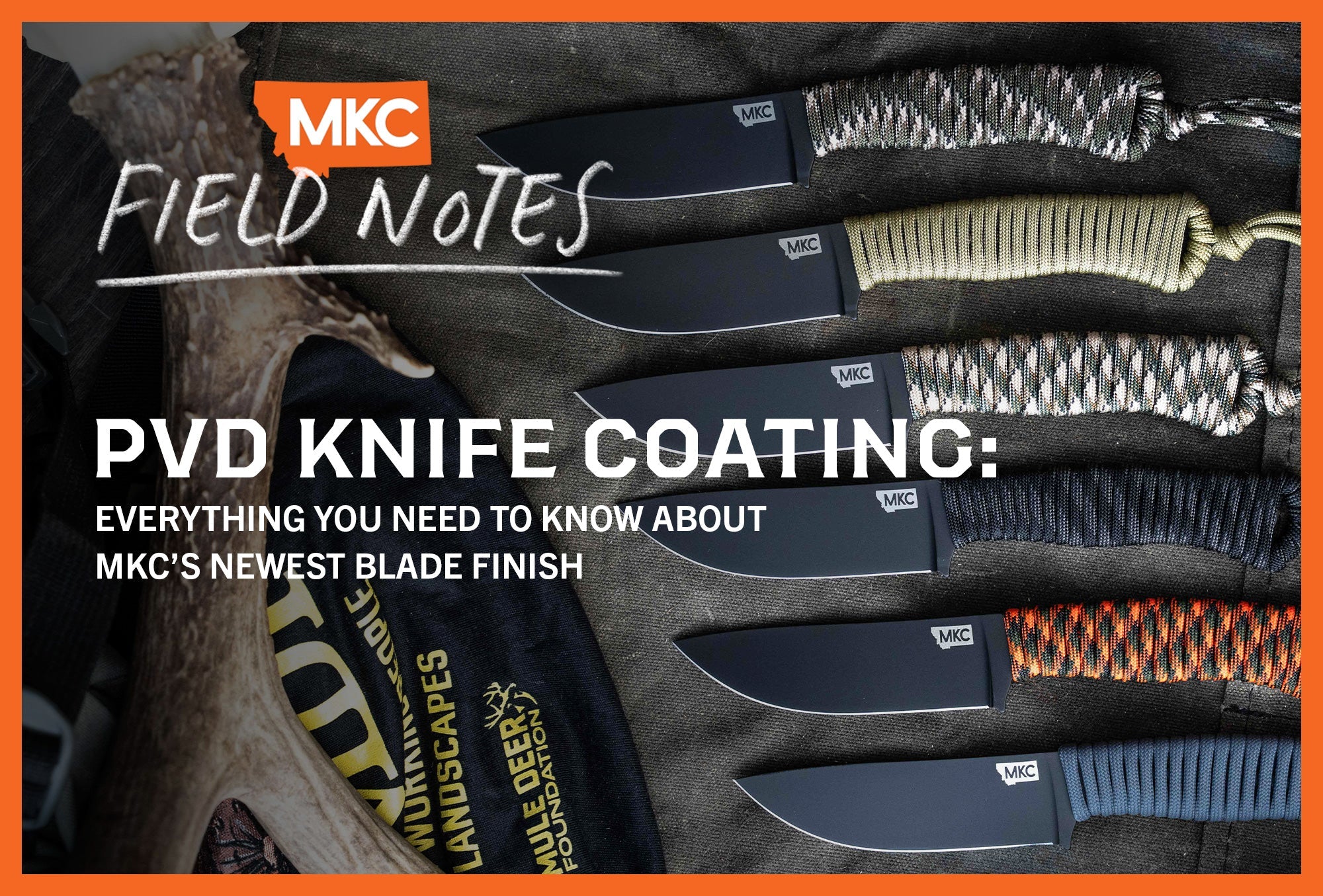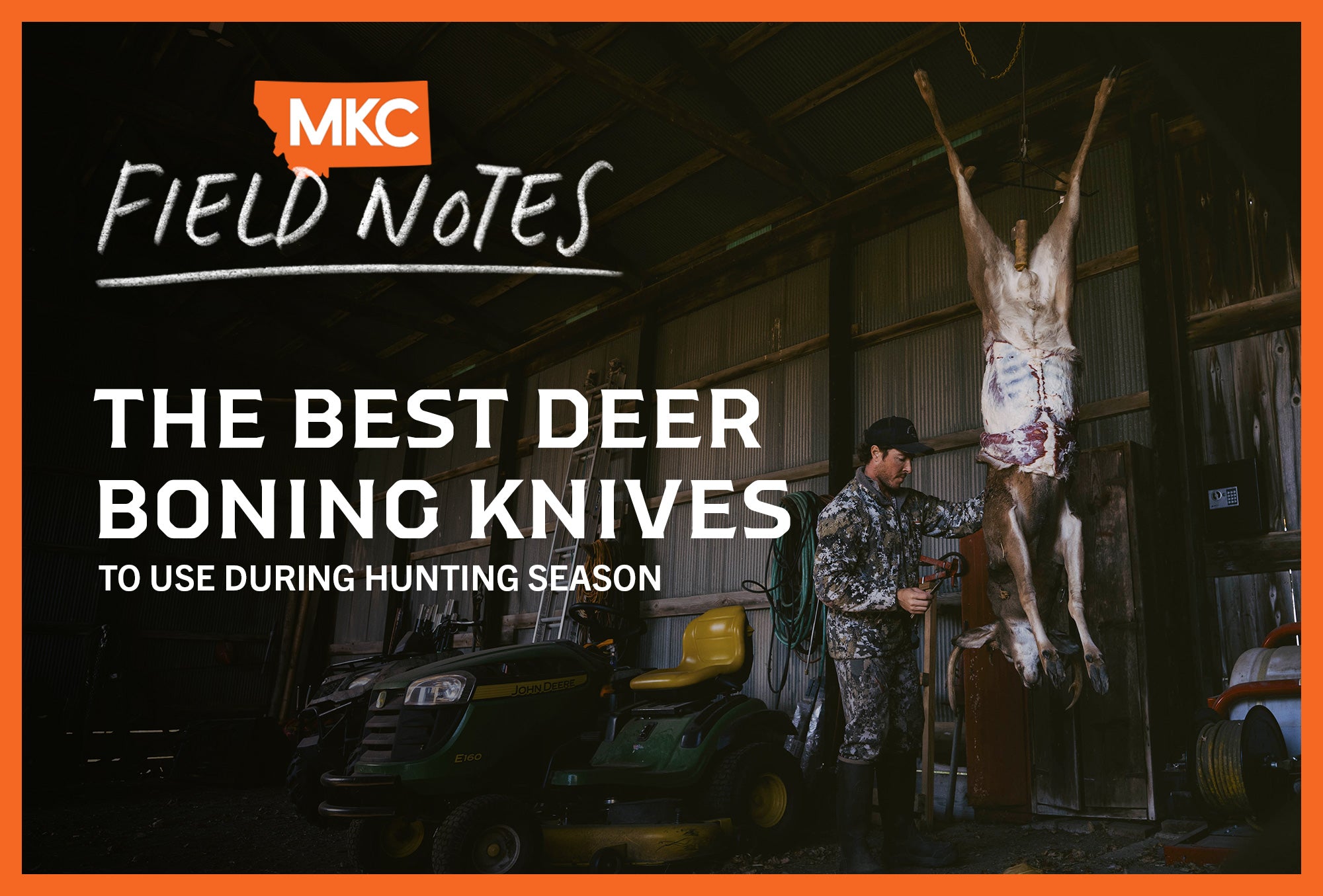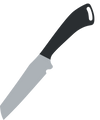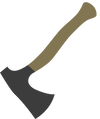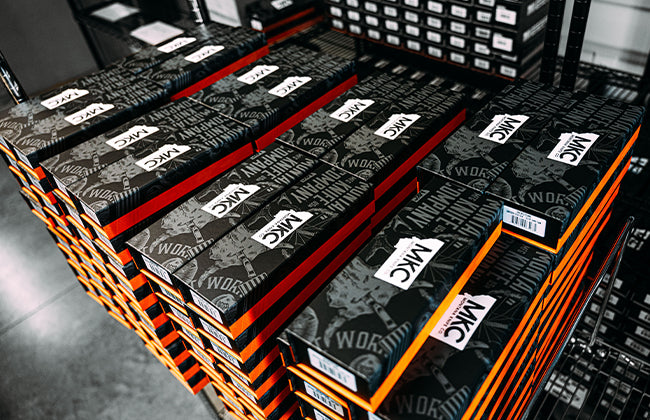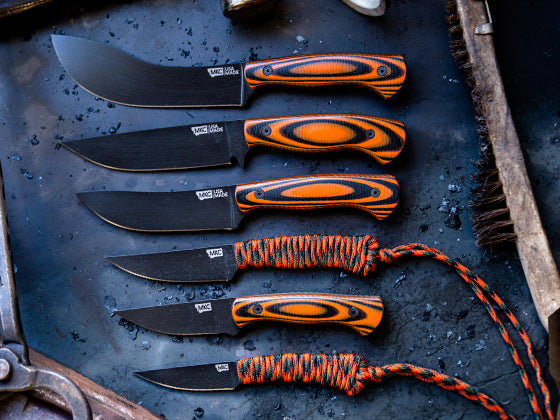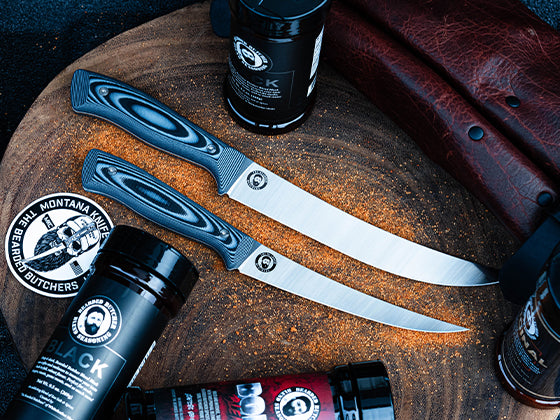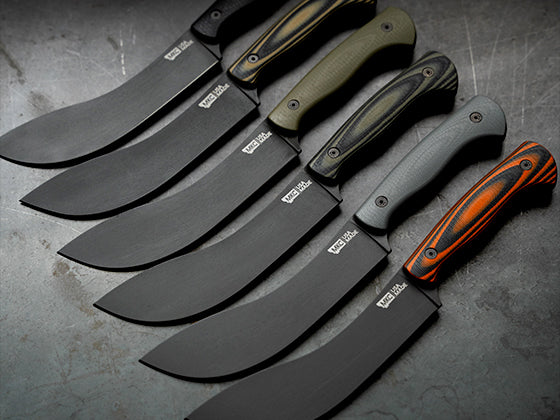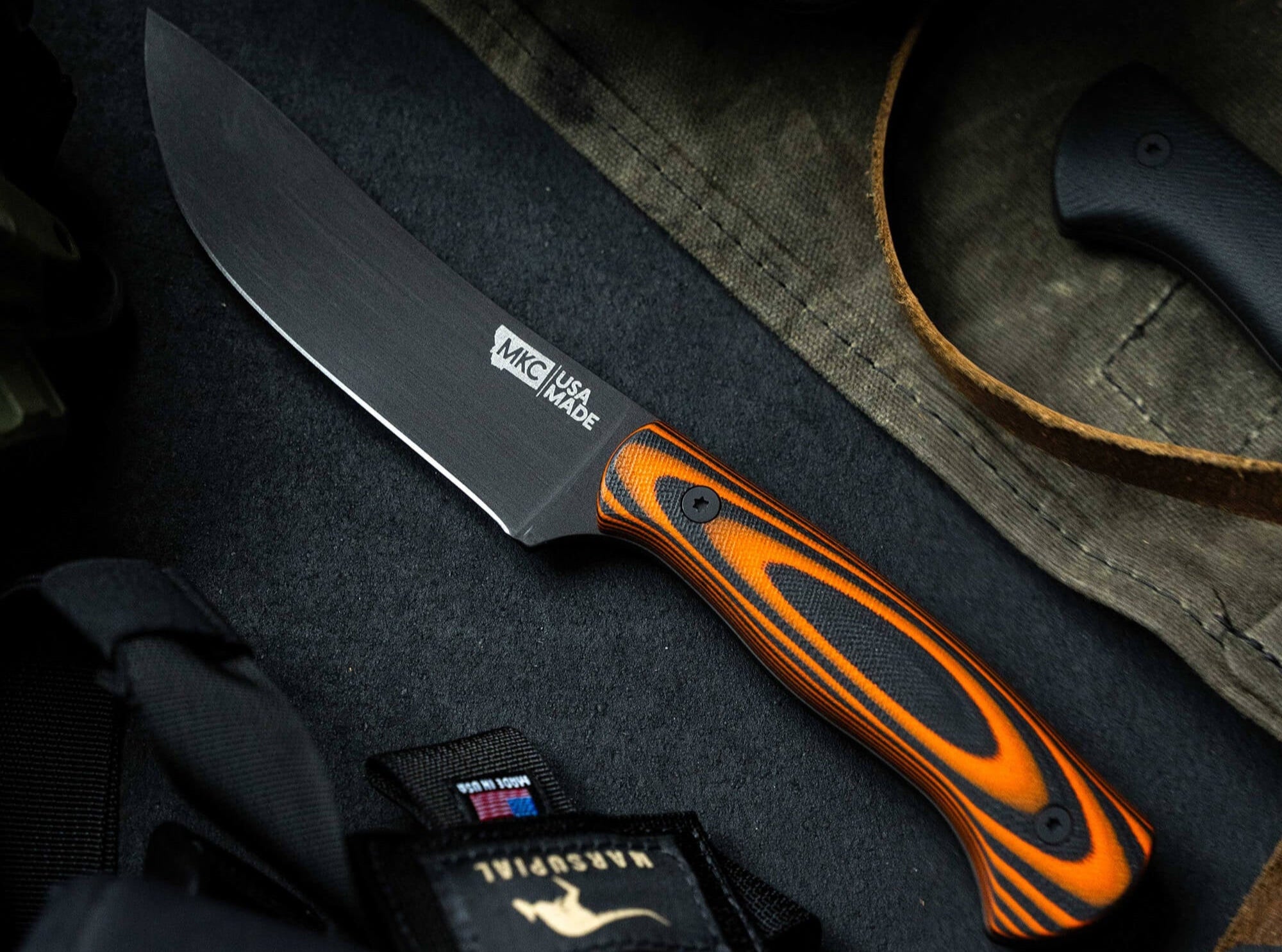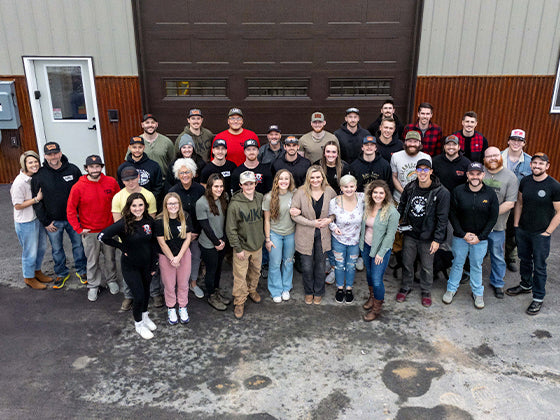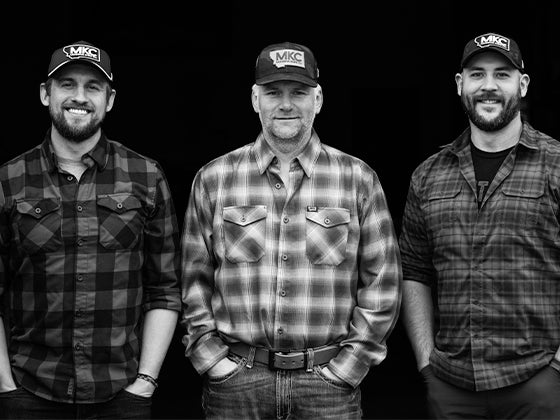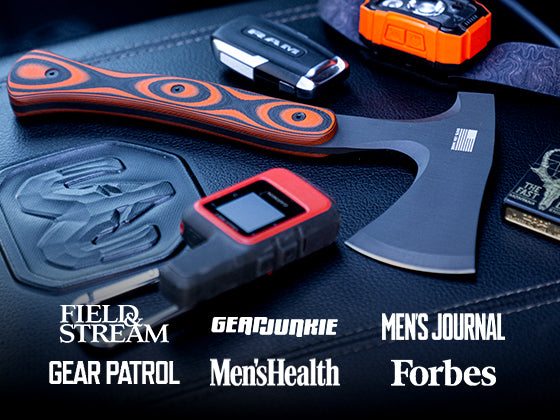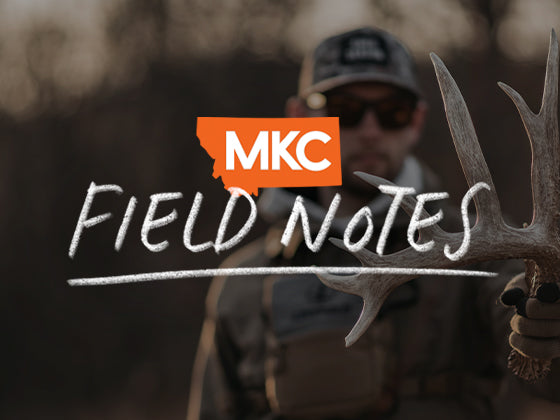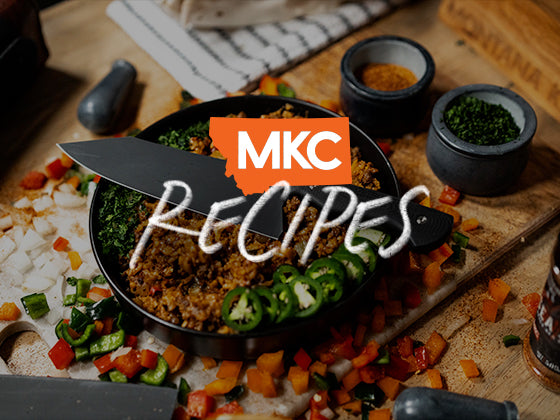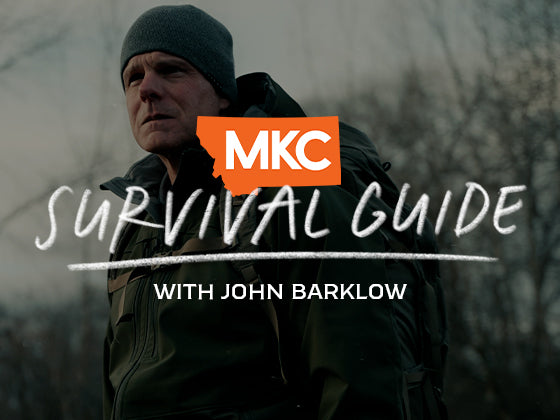Tons of hunters and hikers count every ounce they carry. At times, I’ve been one of them.
They’ll cut the handle off their spoon. They’ll cut the handle off their toothbrush. They’re constantly looking for the lightest pack possible. Too often, this forces them to make compromises that leave them underprepared in the field.
That’s why we made the Speedgoat. Our goal was to create a fixed-blade, ultralight knife that could still perform hard work. It’s the best ultralight backpacking knife, and no blade has dethroned it since its creation.
Why the Speedgoat Is the Best Ultralight Backpacking Knife
The best ultralight backpacking knife needs to be as light as possible without sacrificing durability and functionality.
Knife makers often skeletonize their ultralight knives to reduce weight. They also give them small, bare-bones handles, which come at the cost of comfort in the hand.
The MKC Speedgoat isn’t just another ultralight knife — it’s the best ultralight backpacking knife. We took special care to prioritize comfort and weight.
The paracord wrap coats the skeletonized handle in a durable, yet lightweight cushion. Plus, that paracord can pull double duty in a pinch, replacing a broken boot lace, lashing items to your pack, or even providing fishing line.
Most importantly, the fixed-blade Speedgoat can still bone and cape an entire deer after a successful hunt. I’d challenge you to accomplish that with a disposable blade. Its function makes up for every ounce of weight it claims (and even that is only 1.7 ounces).

What to Look for When Buying the Best Ultralight Backpacking Knife
Looking for the perfect ultralight backpacking knife to take on your next trip? Keep these features in mind.
Strength
The hardest trait to balance with weight in a knife is strength. The more material you shave away, the less durable the knife becomes. Of course, we don’t recommend using an ultralight knife as a bludgeon, but the best ultralight backpacking knife needs to stand up to abuse.
That’s our principal problem with disposable blade knives. Sure, they’re lightweight, but any hard work can make that blade snap. You can replace it with another one, that’s true, but what happens if you run out in the backwoods?
The Speedgoat brazenly toes the line between strength and thinness. It feels like it should be too thin to be strong, but it still brings strength and durability to the table. We accomplished this by adding thickness to the highest-stress areas of the blade while paring down areas that didn’t need it.
Size
To the uninitiated, a folding knife might seem like a life hack-level solution to saving space. It can halve its footprint, meaning you can opt for a larger, sturdier blade than you could otherwise. Unfortunately, it’s not as practical a switch as you’d think.
A folding mechanism is a key piece of your blade that can fail. A catastrophic break is inconvenient at best and dangerous at worst. There’s no way to safely use a sharp blade without a handle.
Carrying your fixed-blade knife outside your pack is one way to circumvent a size issue. A folding knife indeed takes up less space in your pocket or your pack, but that’s not where your knife should be. Your belt or shoulder strap is free, accessible real estate for your ultralight backpacking knife.
If the best ultralight backpacking knife for you is ultra-concealable, our Mini-Speedgoat is a fantastic option. It’s one of our smallest and lightest knives, coming in at just over an ounce.
Sheath
An EDC knife is useless if you can’t access it quickly in an emergency. Your knife’s sheath protects both you and your blade’s integrity when not in use. A good sheath also doubles as a dependable carry system.
Ultralight knives are foldable and easy to stow away in a pocket or pack. However, if the worst happens, you may not have time to fish around for it and pop it open. A fixed-blade EDC with a well-constructed sheath, like the Speedgoat, offers ultralight protection you can draw on a dime.
Imagine if having access to your knife could mean the difference between life and death. Aron Ralston had to cut his own arm off when a falling boulder pinned it to a canyon wall — and yes, this is an extreme example, but imagine if his knife was out of reach! He might not have lived to tell the tale.
While we hope you won’t end up with your arm pinned beneath a boulder, there are plenty of scenarios where access to the best ultralight backpacking knife can save your life.
Material
A blade’s thickness isn’t the be-all and end-all of its durability. Your knife’s material plays a big role, too. There’s no single knife steel that’s the best option in every situation, so you’ll have to decide what’s best suited to your backpacking style.
Knives generally come in one of two metals: carbon steel and stainless steel. Carbon steel is slightly lighter, easier to sharpen, and less corrosion-resistant. Stainless steel is heavier, holds its edge longer at the cost of sharpening difficulty, and resists rust better.
Both carbon and stainless steel come in multiple subtypes. Here at MKC, we prefer MagnaCut stainless steel and 52100 ball bearing steel. Other manufacturers may use different blends, but we find that MagnaCut and 52100 perform the best.
The other materials and coatings used in your knife can also affect your experience. Our Speedgoat knife, for example, comes in both MagnaCut stainless steel and Parkerized 52100 carbon steel. Parkerization creates an oxidized layer that protects your knife from its environment. Even with a carbon steel blade, a Parkerized knife can resist corrosion like stainless steel.
Some of our MKC blades also come with Cerakoted blades. Similar to Parkerization, Cerakote protects your blade from damage and corrosion. Cerakote allows for infinite color options, too.
Knife handles also come in different materials. Here at MKC, we’re partial to G10 and paracord handles. We like G10 because it’s sturdy and easy to clean, and paracord because it’s lightweight and multifunctional.
Finally, consider the sheath material your best ultralight backpacking knife has. Our MKC blades ship with a custom-fit Kydex holster by default, but we also offer leather holsters for those who prefer a more natural look.
Select the Best Ultralight Backpacking Knife
When you’re looking for the best ultralight backpacking knife, choose one that’s light, strong, accessible, and dependable. If an ultralight knife doesn’t meet those standards, it can’t do its job, which means those extra ounces in your pack will be wasted anyway.
by Josh Smith, Master Bladesmith and Founder of Montana Knife Company
